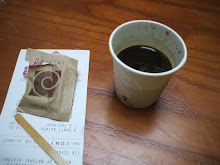
This jumble of granite blocks was a steamer dock in the early part of the century when Sullivan was a prosperous little burg on the coast. Much of the granite used to build Washington DC among other places came out of local quarries and passed down this landing onto steamer ships. Sullivan also had a thriving silver mine industry.
 When things went into decline after the twenties, the dock went into disrepair and eventually became an unrecognizable pile of heavy granite blocks.
When things went into decline after the twenties, the dock went into disrepair and eventually became an unrecognizable pile of heavy granite blocks.For the generations since, it has been a boon. Kids whose families owned houses on the road mingled with kids whose families rented cabins or houses by the week as we scrambled over these blocks. We scraped our knees on rough edges, cut the soles of our feet on barnacles, and risked what must have seemed like life and limb in pursuit of the perfect starfish. Why? Because there are few places I've ever been where you can so easily reach into the water and find this:

In recent years, they've put in the new dock and float off the point, and shored up parts of the pile. To those of us who've been here for years, the changes are obvious but understated enough to be "acceptable." Regardless, the starfish have survived well, though there seem to be fewer big ones now. Other changes in the ecosystem are evident, though. Sanddollars seem to be entirely gone; sea cucumbers are rare, though a few anemones still survive; urchins and crabs are around, but there is no sign of moon snails.
Still, the starfish remain. Banana and future generations can still pluck starfish from the rocks and leave them out to dry. I hear it's possible, though I never managed to get anything but a stinking mess out of my efforts to dry one. But being a kid is--and should be--all about optimism.

